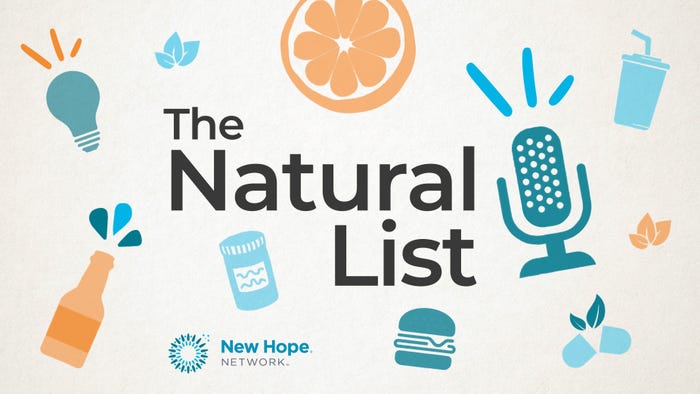The Essential Fatty Acid Frenzy
March 25, 2007

It has taken decades to establish essential fatty acids (EFAs), particularlyomega3’s, as a reputable nutritional category, and only now are they starting to get the attention they rightfully deserve.
By
Rebecca Wright
Editor
The essential fatty acid (EFA) market, which includes predominantly omega 3 and 6 fatty acids, has been met with great success over the last several years, but it continues to suffer from an identity crisis of sorts, as well as a lack of clear communication about benefits. Which omega 3’s are best? Are omega 3’s more beneficial to health when compared to omega 6 fatty acids? Does the risk of consuming omega 3’s from fish or fish oil involve more risk than benefit? What dosages are most appropriate? These are the questions companies and researchers have been trying to answer and they have finally come to some solid conclusions.
EFA Primer
Put simply, EFAs are essential to human health because they cannot be manufactured in the body, so it is imperative that they be consumed through the diet.
The specific omega 3’s cited most in the scientific literature as having health benefits include docosahexaenoic acid (DHA), eicosapentaenoic acid (EPA), and to a lesser extent alpha linolenic acid (ALA). These omega 3’s are derived mostly from marine and plant sources like fish, algae or flax.
The main sources of gamma linolenic acid (GLA), a beneficial omega 6, include evening primrose, borage and black current oils. There is some conflicting information, however, surrounding another omega 6 fatty acid, arachidonic acid (AA), which in large amounts has been found to trigger excessive inflammation, a root cause of many chronic diseases.
Consumers today, experts say, are too heavy on AA and too light on other beneficial fatty acids. Kristen Trautman, product category coordinator, Bioriginal, Saskatchewan, Canada, shared her point of view. “Each fatty acid plays a key role in the proper functioning of the body. AA produces pro-inflammatory messengers, which are required to help the body ward off disease and aid recovery after injury,” she said. “Unfortunately, the modern diet is AA heavy, which causes an imbalance in the body that can lead to inflammation. Supplementation with GLA, which produces anti-inflammatory messengers, is therefore necessary to restore equilibrium.”
Consumer Awareness High, Consumption Still Low
Omega 3’s and 6’s are firmly established in the supplement sector, with growth rates approaching steady levels. But the big story over the next five to 10 years will likely come from food and beverage companies looking to incorporate omega 3’s into their fortification businesses. Food companies are diving into the omega 3 market head first, driven by rapidly increasing awareness, hopefully to be followed by increasing consumption.
Nutrition Business Journal (NBJ), San Diego, CA, claims the EFA market grew to $440 million in 2004. Nearly two-thirds of the market ($285 million) was represented by fish-based ingredients, while the remaining third belonged to plant-based fatty acids, such as algae, flax and borage oils. In 2005, fish oil supplement sales grew to $360 million.
As the omega 3 supplement market grows up, many companies are looking to differentiate products by tweaking the EPA/DHA ratios of certain formulas in order to serve specific niches, such as cognitive function, behavior or heart health. The customization of products will help move the market beyond the standard 18/12 formulations, which are already approaching commodity status.
But the omega 3 supplement market has a long way to go before it reaches maturity. While over 60% of consumers claim to be familiar with omega 3 fatty acids, only about 4% act on that awareness by consuming an omega 3 supplement, according to Robert Orr, president and CEO, Ocean Nutrition Canada (ONC), Dartmouth, Nova Scotia, Canada. However, he thinks awareness and consumption levels should come to some middle ground with the launch of national food and beverage brands containing omega 3’s. “We are still 12 to 18 months away from a real market explosion of omega 3 products in the food and beverage area,” he said, adding, “But as national brands start to take off this will help build awareness and consumption.”
Going by estimates from DSM Nutritional Products, Inc., Parsippany, NJ, awareness and usage of omega 3’s seems a bit higher. Referring to a 2006 “Study of Consumer Awareness and Interest in PUFA/Omega-3,” conducted by Multi-sponsor Surveys, Inc., DSM asserts that 12% of the U.S. adult population (over age 18) takes an “omega 3” supplement, most commonly and notably “fish oil.” This compares to 6% usage in 2002.
Further, the study claims that although 50% of the respondents were able to identify specific health benefits with consumption of omega 3 fatty acids, the number of those recognizing benefits of taking “fish oil” was 67%. In fact, prevention of heart disease and heart attack was the major unaided recalled benefit of “fish oil” consumption by one in three adults. Comparatively, only one in five adults recognized this same health benefit from consumption of omega 3’s.
Diane Hnat, senior marketing manager, New Business Development, North America, DSM Nutritional Products, Inc., said, “It is interesting to note that there are now some qualified health claims (QHCs) for EPA+DHA (in fish oil), as well for omega 3, so we can see if or how that might influence consumer perspectives about these heart health benefits in our 2007 study.”
Ms. Hnat also pointed out that “EFA” is not a consumer term. “Consumers are more in tune with words like ‘omega 3’ (76% awareness) and ‘fish oil’ (80% awareness), compared to terms like ‘DHA’ (28% awareness), ‘EPA’ (26% awareness) and ‘alpha linolenic acid’ or ALA (26% awareness), which are much farther behind,” she explained.
Data from the 2006 Health & Wellness Trends Database, created by the Natural Marketing Institute (NMI), Harleysville, PA, show that consumers consider themselves deficient in EFAs. In the case of omega 3’s specifically, nearly one-third of the general population considered themselves deficient last year, followed by 9%, which believed they were deficient in DHA (Table 1).
As far as health benefits go, almost 40% of consumers associate fish oil with heart health above any other health area (Table 2).
As far as their health connection with the term omega 3, heart health again came out on top. The other health areas included cognitive function/brain health, cancer prevention and immune support (Table 3).
Martek BioSciences, Columbia, MD, also shared some consumer awareness data with regard to DHA. Within the general population, it claims DHA registers 38% awareness. But the percentages get higher when you look at different slices of the population, including expectant mothers (65% awareness of DHA), mothers with children less than four years old (74% awareness of DHA) and mothers with children who are two and younger (77% awareness of DHA).
The numbers are even more impressive when talking about DHA-fortified formula. “Awareness that infant formulas contain DHA is very high, more so among new than expectant mothers,” the company said. Seventy-two percent of expectant mothers are familiar with DHA-fortified formulas, while a whopping 92-96% of mothers with children less than two years old maintain awareness of DHA-fortified formula.
As research continues, Bioriginal’s Ms. Trautman believes the evidence to support condition-specific benefits will become stronger, paving the way for more targeted EFA products, as well as multi-ingredient and/or multi-benefit supplements. “The key to ensuring that EFA-enriched products fulfill their potential is to educate consumers about the importance of the omega 3/6 balance,” she explained. “Consumers should be given more guidance on how to use supplements to improve their diets, as well as to optimize their health, ensuring they recognize that the dosage levels available in functional foods do not match those of supplements. Foods fortified with omega 3’s, for example, are not intended to replace oily fish, or a daily omega 3 supplement, but rather work with them to improve consumers’ health.”
Because each EFA source offers unique benefits, Ms. Trautman said selection is often dependent on the target audience. “Omega 3 from fish oil, for example, may be more suitable for products aimed at children, where improved learning and concentration is a desired benefit,” she offered. “Omega 6 from borage oil, on the other hand, may be suitable in a supplement aimed at women, where benefits like improved skin health and hormonal regulation are important.”
Omega 3’s Preparing for the Perfect Storm
It’s finally happening. The decades of work carried out to prove the beneficial impact of omega 3’s in several health areas (i.e., heart health, cognitive function/development, mood, behavior, joint health, eye health, etc.) is really starting to pay off in the form of stellar awareness levels and growing consumption. And food companies are finally taking notice.
ONC’s Mr. Orr says there are three main drivers helping create this perfect storm: (1) continued good science surrounding benefits of omega 3’s; (2) continued positive mainstream and trade media reporting; and (3) improving regulatory environments.
As omega 3’s continue to thrive in this positive environment, it will be the uptake by major food and beverage manufacturers that eventually pushes the category mainstream. Mintel, Chicago, IL, maintains that just two years ago omega 3’s showed up in 120 new food products. By 2006 omega 3’s found their way into 260 products. And 2007-2008 are being described by experts as a period in which omega 3-fortified products will flood the market.
One executive who believes omega 3’s are on the brink of explosion is Martek’s director of marketing, Phil Fass. “The biggest potential is in the fortified food market, or having mainstream food products use EFA’s (specifically DHA omega 3) as they now use calcium, iron, vitamin D, etc.,” he said. “The science will continue to show that all consumers should obtain a minimum level of DHA from their diets and foods, which historically have been the ways people consumed DHA.”
The food sector of the omega 3 market is far from commoditized , primarily because the delivery side of the equation remains complicated. Delivery requires innovative technology and in-depth formulation expertise.
Some of these hurdles are responsible for delaying the flood of omega 3 products to market. Adam Ismail, business development manager, Cargill Health & Food Technologies, Minneapolis, MN, explained. “There has been a lot of buzz surrounding the inclusion of omega 3’s in food,” he said, adding, “and a lot of companies thought developments would materialize a lot sooner. But it took a little longer than expected for suppliers and food companies to overcome some of the technical issues.”
Another important thing to point out, according to Mr. Ismail, is that companies are not seeking out omega 3�’s like they do plant sterols, for example. In other words, omega 3’s are not so much being incorporated as functional ingredients into products (i.e., sterols and orange juice), but rather as part of fortification processes. Mr. Ismail claims even bigger opportunities in the food and beverage sector lie in product areas where volumes are higher, such as staple goods (i.e., breads, yogurts and milks).
Going to the Source
The debate between the bioavailability and health benefits of different sources of omega 3 fatty acids continues to heat up. In the supplement sector, it is fairly well understood in terms of health benefits that there exists a dividing line between omega 3’s from fish/algae and flax. On the food and beverage front, however, the distinction is less clear, many companies choosing to formulate with omega 3 ALA from plant sources like flax because it is cheaper and easier to incorporate into food/beverage systems.
This has created a lot of confusion, mainly among consumers who think they are getting an appropriate dose of omega 3’s from marine sources. As a result, companies and researchers continue to emphasize that not all omega 3’s are created equal.
Another issue is the bioavailability of ALA. When ingested, it is eventually converted to DHA and EPA in the body. The problem is the conversion is slow and often results in less DHA and EPA consumption than could have been obtained by a more direct source of the two fatty acids. Even the Institute of Medicine (IOM) in a 2002 report stated, “ALA is not known to have any specific functions other than to serve as a precursor for synthesis of EPA and DHA.” And currently that conversion to EPA and DHA is what has people talking.
As far as the health benefits for ALA, the evidence pales in comparison to that which exists for omega 3 EPA and DHA. Dr. Joyce Nettleton, science communications consultant, Science Voice Consulting, Denver, CO, and editor of the Fats Of Life and PUFA newsletters, believes there is no question that DHA and EPA have more benefit in comparison to ALA. “In my mind there is no controversy. The quality and amount of data for ALA are lacking across the board for any specific benefits,” she said.
Baldur Hjaltason is the sales manager for North America, Japan and China at Lysaker, Norway-based EPAX AS, which was recently acquired by Austevoll Seafood. He supported Dr. Nettleton’s conclusions. “According to clinical trials, only a small part of ALA from flax can be converted to EPA, which means EPA and DHA are also needed from other marine sources,” he said.
For this reason, Mr. Hjaltason says, FDA purposely excluded ALA from the qualified health claim, which focuses on omega 3 EPA and DHA only, to prohibit makers of ALA-based products from using it. “This in turn is forcing marketers to highlight EPA and DHA content on their labels, not only the omega 3 content,” he said.
Tony Bimbo, a technical consultant for International Fisheries applied some historical perspective to the source issue. “For many years the only way that fish oil could be used in foods was to hydrogenate it to make it similar to the vegetable oils. The vegetable oils with low levels of ALA were always considered unstable and researchers have been trying to reduce or lower the ALA to produce a more stable oil. Linseed oil with a very high level of ALA has always been used as a drying oil in coatings and varnishes. In order to reduce the effects of the ALA, they bodied the oil (heat polymerize) to reduce the levels of the ALA,” he said. “Now the two most unstable oils are being promoted for their omega 3 content—fish with the long chain polyunsaturated fatty acids (PUFAs) EPA and DHA, and linseed (now flaxseed) with the short chain PUFA ALA.”
Speaking to the ALA issue, he said, “Regardless of all the publications suggesting that the conversation of ALA to EPA and DHA is inefficient, the number of foods formulated with flax seems to be increasing. The reason companies to turn flax is simple: it’s easy to handle, does well in cereals, pasta and breads, and appears to be stable in those environments. It also sounds better when you read the ingredient list.”
There is also a quieter debate going on between the fish-based omega 3 companies and those that supply algal source omega 3’s. “The argument suggests that since DHA can be converted to EPA there is no need to consume fish oils and you really only need DHA from algal oils,” Mr. Bimbo explained. “Unfortunately, because of price and perhaps availability, more companies have moved toward the fish oils instead of the algal oils.”
For the future, Mr. Bimbo said the industry should expect more competition from genetically modified sources of omega 3’s. “One other area to be aware of is the genetically modified soybean, safflower or canola plants that will contain the gene to produce the long chain PUFAs,” he commented. “Monsanto, Dupont, BASF and Syngenta are all active in this area and there are forecasts claiming that some of these varieties might be commercial between 2008 and 2010.”
Risk vs. Benefit: Quelling Fish Fears
Over two decades ago, according to the Harvard School of Public Health (HSPH), Cambridge, MA, pioneering studies showed that Greenland Eskimos, who consumed high amounts of omega 3 fatty acids from seafood, had very low rates of coronary heart disease (CHD) death. Further studies found that omega 3 fatty acids in fish appeared to have important neurodevelopmental benefits to children during gestation and infancy. Conversely, HSPH maintains, concerns have also been raised about potential harmful effects to human health from chemicals in fish. This has led to confusion among consumers, who have been left to weigh the risks vs. the benefits on their own. But new research may settle the debate once and for all.
Researchers from HSPH tackled the risk vs. benefit issue by undertaking the single most comprehensive analysis to date of fish and health. In the first review to combine the evidence for major health effects of omega 3 fatty acids, major health risks of mercury, and major health risks of PCBs and dioxins in both adults and infants/young children, the results show the benefits of eating a modest amount of fish per week—about 3 oz. of farmed salmon or 6 oz. of mackerel—reduced the risk from CHD by 36%. Notably, by combining the results of randomized clinical trials, the investigators also demonstrated that intake of fish or fish oil reduces totally mortality—deaths from any causes—by 17%.
The report concluded, “Overall, for major health outcomes among adults, the benefits of eating fish greatly outweigh the risks.”
Mr. Bimbo added his perspective in relation to fish oils specifically. “There is a myth that since you can find certain contaminants in the fish flesh, they are also in the omega 3 fish oils on the market,” he said. “The problem with this assumption is that while fish flesh is consumed after cooking, fish oils go through a multitude of processing steps designed to remove any traces of compounds or materials that will render the finished product inedible because of flavor, color, smell, or the presence of environmental contaminants.” Similarly, he said, “Vegetable oils are generally inedible when extracted from the oilseed and require the same processing steps that are used for fish oils (virgin olive oil might be the exception).”
The reality is, Mr. Bimbo continued, “The responsible companies in this business have modern plants that are capable of removing these compounds. They also source fish oils from species of fish caught in bodies of water that are far removed from industrial activity, such as the west coast of South America.”
Establishing an RDA, Unqualifying the Health Claim
Companies have been lobbying for the establishment of an RDA for EPA/DHA for years. In fact, this is one of the chief objectives of the new trade association Global Organization for EPA and DHA Omega-3, or GOED, which was formed in October last year. Most of the companies that take part in this organization were formerly members of the Council for Responsible Nutrition’s (CRN) Omega-3 Working Group.
The new trade association will build on the accomplishments of the old Working Group, including its product quality focus and industry acceptance of the voluntary omega 3 monograph, and take on a broader mandate more suited to a trade association. The GOED Omega 3 “Start-up” Committee consists of Mr. Orr of ONC; Mr. Fass of Martek; Bjorn Rene, vice president of sales at Napro Pharma; and Ian Newton, president of Ceres Consulting.
The organization is comprised of EPA and DHA omega 3 processors, refiners, manufacturers, distributors, marketers and retailers, as well as secondary associates and other interested parties, including healthcare professionals, educators and researchers.
According to Mr. Orr, the association’s president, consumers should be getting their daily requirements of omega 3’s in multiple servings of foods. And for ingredients widely known to be of great benefit, he says “it is unacceptable that we do not have an RDA for EPA/DHA.” He hopes to get an RDA established within the next two years.
Ceres Consulting’s Mr. Newton says general consensus puts the current RDA for EPA/DHA at 160 mg. In order for a company to claim that its product contains an “excellent source” of omega 3’s, it would need to provide 20% of the RDA, or 32 mg.
Going back to why food and beverage companies have been somewhat hesitant to embrace omega 3 EPA/DHA until now, Mr. Newton explained, “The absence of an RDA makes it a little more difficult for companies to jump on board with regard to fortification because putting in an appropriate dose of omega 3’s still poses some technical issues for food/beverage matrices. Add to that the qualified claim for omega 3 EPA/DHA and you get companies that don’t want to invest the time and money to resolve those technical issues.”
Speaking of the qualified health claim for omega 3 EPA/DHA and heart health, another one of GOED’s goals in the short term is removing the qualification to the current claim, which reads: “Supportive but not conclusive research shows that consumption of EPA and DHA omega 3 fatty acids may reduce the risk of coronary heart disease. One serving of [name of food] provides [x] grams of EPA and DHA omega 3 fatty acids. [See nutrition information for total fat, saturated fat and cholesterol content.]
As of 2004, this claim became applicable to both conventional foods and dietary supplements. FDA recommends that consumers not exceed more than a total of 3 grams per day of EPA and DHA omega 3 fatty acids, with no more than 2 grams per day from a dietary supplement.
Stay Tuned!
The omega 3 category has so much momentum, but will the product launches catch up with the buzz? Find out in the October issue when Nutraceuticals World presents its Omega 3 Product Round-Up.
You May Also Like


